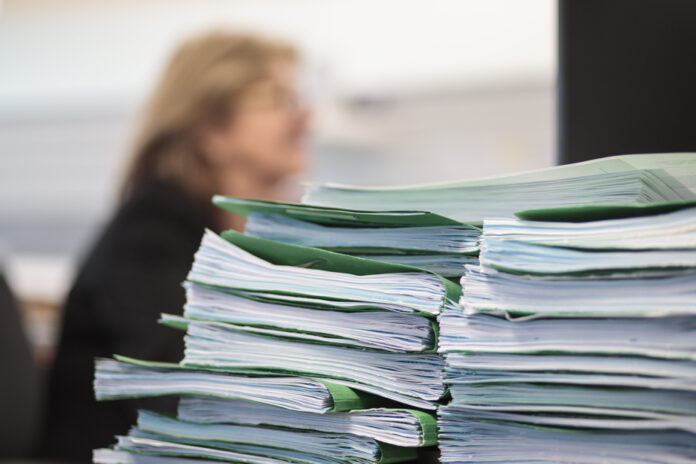Nancy*, 46, is a contract manager in the audiovisual production sector. With her income of around $110,000 per year, and a reasonable lifestyle, Nancy has built up a balance sheet with a net asset value of around $590,000 (financial and non-financial assets less the debts).
A little more than half of these net assets, or $340,000, come from his registered retirement savings plan (RRSP). She contributes some $18,000 per year due to her status as a contractual manager who does not have access to an employer pension plan.
However, his tax-free savings account (TFSA) remains unused. As for its liabilities, they consist of mortgage loans and an RRSP loan of $289,000, almost two-thirds of which ($181,000) are financed at a variable interest rate currently at 6%.
It is in this context that Nancy recently learned that she will soon inherit $75,000 in cash from a relative.
This inheritance is planned in two portions: $65,000 by the end of fiscal year 2023 and $10,000 planned in early 2024.
Consequently, Nancy is seeking advice on the best way to use this inheritance in order to enhance her financial situation based on the requirements of tax optimization and medium- and long-term financial planning.
As additional information, Nancy is single and has no dependents. Also, Nancy is considering reselling her condo within two or three years for an anticipated value of around $425,000, in order to purchase an apartment of a larger size and range and move into it.
Nancy’s situation was entrusted for advisory analysis to Charles-Antoine Gohier, who is practice leader in personal financial planning at National Bank Financial.
Financial assets :
Non-financial assets:
Passive :
Annualized expenses: $76,000
(residence: $22,000, lifestyle: $36,000, RRSP contributions: $18,000)
“In Nancy’s situation, the main question regarding the proper financial use of this inheritance comes down to this: should she invest this sum or pay off her debt? notes Charles-Antoine Gohier.
“To answer this question, we must first consider the interest cost of this debt and Nancy’s tax rate based on the predictable net return on investments in non-registered accounts or registered accounts such as the RRSP and the TFSA . »
Thus, in the case of non-registered investments, estimates Mr. Gohier, “they should yield nearly 9% before tax in interest, dividends and capital gains to be able to downgrade the repayment of his mortgage loan on his condo to the rate variable rate of 6.3%, and even more in the case of its RRSP loan.”
In this context, it is clear that such a return of nearly 9% on unregistered investments appears unrealistic for an individual investor with a “balanced” profile like Nancy.
But in the case of investments made in registered accounts such as the RRSP and the TFSA, points out Mr. Gohier, since their return is sheltered from tax, the comparison between their predictable rate of return and the interest rate of the mortgage becomes less perilous.
“Nancy has a mortgage loan at 6.3% interest, while her “balanced” investor profile allows us to anticipate a net return (after fees) of around 3.5% to 4%. », summarizes Charles-Antoine Gohier.
Consequently, “in her current situation, the best financial decision for Nancy would be to use the amount received as an inheritance to repay her entire RRSP loan and accelerate the repayment of her [variable rate] mortgage on her condo up to the maximum allocated in his loan contract”.
However, warns Mr. Gohier, “before deciding on the maximum amount of her mortgage repayment, Nancy should ensure that she has built up an emergency cash fund in order to be able to compensate for an unforeseen event such as a termination or reduction of their employment contracts, a major health incident or even a large unexpected expense in their budget”.
How much should you put into this emergency fund? “Usually, an amount equivalent to three months of living expenses is recommended, or nearly $20,000 in Nancy’s case,” indicates Charles-Antoine Gohier.
“Also, this emergency fund could be in a TFSA account – not yet used by Nancy – in order to take advantage of the tax-free return on these savings while avoiding the use of a high-interest line of credit. »
That said, the financial roadmap proposed to Nancy for the use of her inheritance is summarized as follows:
– not invest in non-registered account investments with taxable returns;
– repay the RRSP loan of $6,200 at an interest rate of 6.6%;
– accelerate the repayment of the mortgage on the condo (at 6.3% variable) to the annual maximum of $33,000 (15% of the initial amount);
– create an emergency fund of around $20,000 from the unused TFSA account (three months of current expenses);
– pay the remaining balance (approximately $6,800) of the inheritance received in 2023 into the TFSA account in anticipation of another mortgage repayment of around $16,000 in 2024 with the second portion of $10,000 in legacy.
Are you planning a project that requires wise use of your money? Do you have financial problems?















